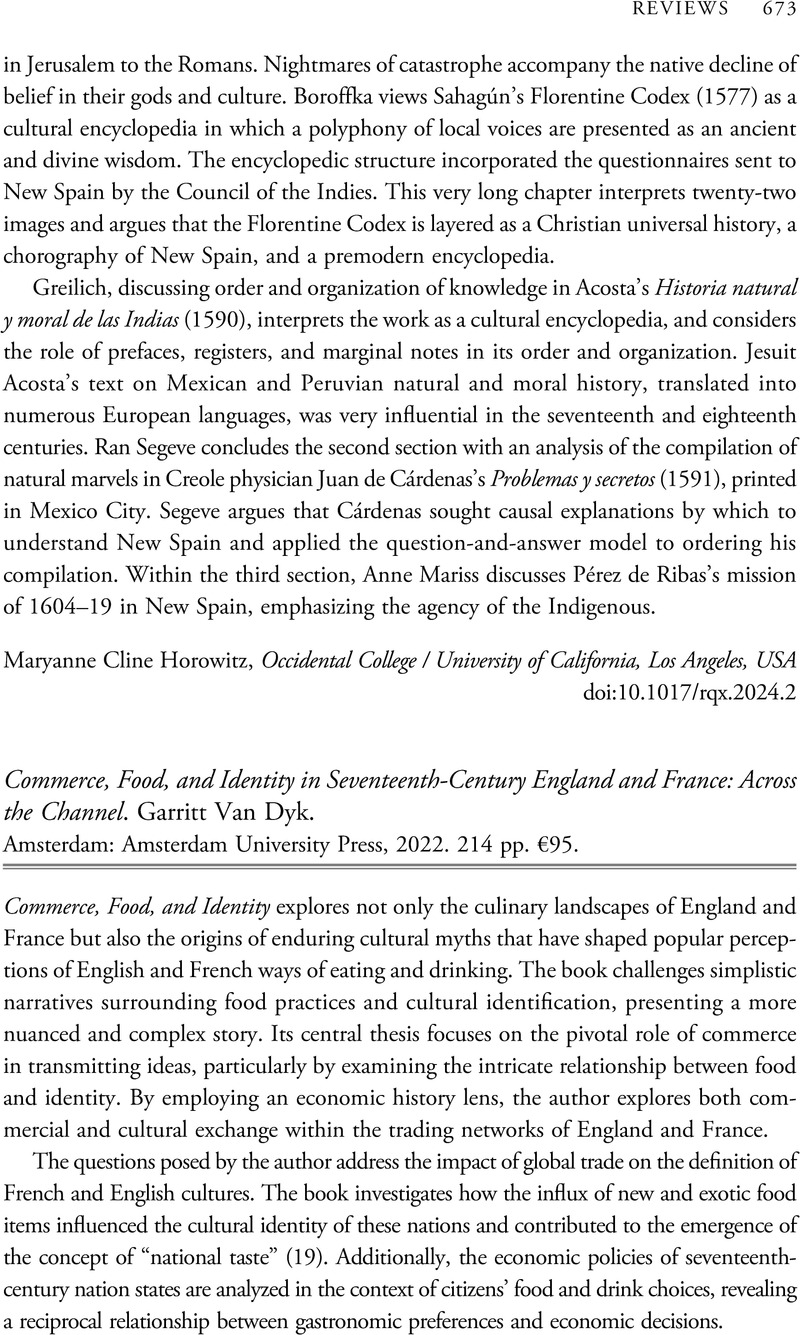No CrossRef data available.
Article contents
Commerce, Food, and Identity in Seventeenth-Century England and France: Across the Channel. Garritt Van Dyk. Amsterdam: Amsterdam University Press, 2022. 214 pp. €95.
Review products
Commerce, Food, and Identity in Seventeenth-Century England and France: Across the Channel. Garritt Van Dyk. Amsterdam: Amsterdam University Press, 2022. 214 pp. €95.
Published online by Cambridge University Press: 11 November 2024
Abstract
An abstract is not available for this content so a preview has been provided. Please use the Get access link above for information on how to access this content.

- Type
- Review
- Information
- Copyright
- Copyright © The Author(s), 2024. Published by Cambridge University Press on behalf of Renaissance Society of America



